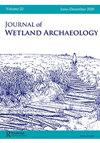Hydrological Assessment of Star Carr and the Hertford Catchment, Yorkshire, UK
Q1 Arts and Humanities
引用次数: 14
Abstract
Abstract The survival of one of Europe's most important Mesolithic sites, Star Carr, has been threatened owing to recent changes in its hydrology and associated changes in groundwater geochemistry. Before this study it was unclear what was controlling these changes, but possible causes were changes in precipitation regime (notably the frequency of drought), changes in groundwater abstraction, recent agricultural drainage or a combination of these factors. This paper evaluates the hydrology of Star Carr and its environs within the River Hertford sub-catchment of the River Derwent. Available hydrological data (precipitation, evapotranspiration, river flow and groundwater levels) were collated and used to characterise the River Hertford catchment and provide a hydrological and hydrogeological context for the site. The data were augmented by the insertion of 12 dipwells into the site which were used for both site monitoring and model testing. The monitoring included water abstraction for isotopic analyses (δ2H v δ18O). Two modelling approaches were undertaken: firstly, calculation of the Palmer Hydrological Drought Index (PHDI); and secondly, development of a three layer, finite difference groundwater model of the site using Modflow. The results strongly suggest that hydrological changes at Star Carr have not been caused by changes in precipitation patterns, although the water flowing through the site is largely of meteoric (rainfall) origin. Groundwater abstraction has also not had any impact upon the site. However, results from the groundwater model suggest that the dominant factor has been the insertion of under-drainage, which has lowered the water-table by >0.5 m into the archaeologically sensitive zone. The study reported here shows how high the sensitivity of a small wetland can be to local land management practices, and, significantly, illustrates how a hydrological assessment of wetland archaeological sites can be made even without a history of on-site monitoring.英国约克郡Star Carr和赫特福德集水区的水文评估
欧洲最重要的中石器时代遗址之一,Star Carr,由于其最近的水文变化和地下水地球化学的相关变化,其生存受到威胁。在这项研究之前,尚不清楚是什么控制了这些变化,但可能的原因是降水制度的变化(特别是干旱的频率),地下水开采的变化,最近的农业排水或这些因素的组合。本文对德温特河的赫特福德河子集水区的斯塔卡尔河及其周边地区进行了水文评价。现有的水文数据(降水、蒸发蒸腾、河流流量和地下水位)被整理并用于描述赫特福德河集水区的特征,并为场地提供水文和水文地质背景。通过在现场插入12口深孔来增加数据,这些深孔用于现场监测和模型测试。监测包括抽取水进行同位素分析(δ2H v δ18O)。采用了两种建模方法:首先,计算Palmer水文干旱指数(PHDI);其次,利用Modflow建立了三层有限差分地下水模型。研究结果有力地表明,尽管流经该地点的水主要来自大气(降雨),但斯塔卡尔的水文变化并不是由降水模式的变化引起的。抽取地下水也没有对场地造成任何影响。然而,地下水模型的结果表明,主导因素是下排水的插入,这使得地下水位降低了0.5 m,进入了考古敏感区。这里报告的研究表明,小湿地对当地土地管理实践的敏感性有多高,而且,重要的是,说明了如何在没有现场监测历史的情况下对湿地考古遗址进行水文评估。
本文章由计算机程序翻译,如有差异,请以英文原文为准。
求助全文
约1分钟内获得全文
求助全文
来源期刊

Journal of Wetland Archaeology
Arts and Humanities-Archeology (arts and humanities)
CiteScore
1.40
自引率
0.00%
发文量
6
期刊介绍:
The Journal of Wetland Archaeology publishes a wide range of contributions in all fields of wetland archaeology. It includes scientific and methodological features, geoprospection, environmental reconstruction, wetland hydrology, cultural aspects of wetland archaeology, as well as conservation, site management, legislation, and site protection. All periods and all geographic regions are covered.
 求助内容:
求助内容: 应助结果提醒方式:
应助结果提醒方式:


